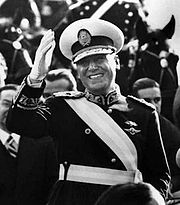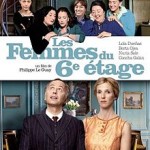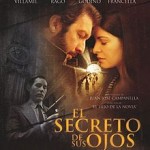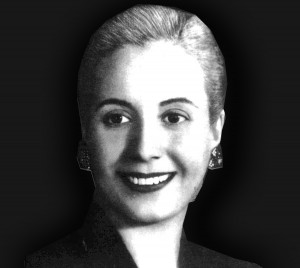 Because this movie that premiered in 1996 was nominated for several Academy Awards (won Best Original Song) and Madonna who played Eva Peron (Evita) won the Golden Globe for Best Actress, it got some recognition, but no one has ever recommended this movie to me in the 16 years it has been out. I watched this movie without any expectations, and was really pleasantly surprised. It is a wonderful movie. It may be too obvious, but what was most wonderful was Madonna’s skill as a singer.
Because this movie that premiered in 1996 was nominated for several Academy Awards (won Best Original Song) and Madonna who played Eva Peron (Evita) won the Golden Globe for Best Actress, it got some recognition, but no one has ever recommended this movie to me in the 16 years it has been out. I watched this movie without any expectations, and was really pleasantly surprised. It is a wonderful movie. It may be too obvious, but what was most wonderful was Madonna’s skill as a singer. 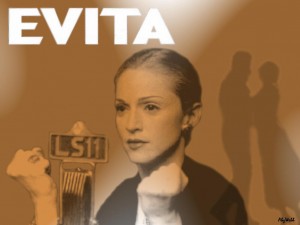 However, interestingly, Madonna tried very hard to market herself for the role of the protagonist Eva, but the movie company was uninterested, and the producer continued searching for another actress. In the end, no other actress was available, and it is said they reluctantly settled on Madonna for the role of Eva. However, I believe no other actress could have done as magnificent of a performance of Eva as Madonna did. I will state the reasons.
However, interestingly, Madonna tried very hard to market herself for the role of the protagonist Eva, but the movie company was uninterested, and the producer continued searching for another actress. In the end, no other actress was available, and it is said they reluctantly settled on Madonna for the role of Eva. However, I believe no other actress could have done as magnificent of a performance of Eva as Madonna did. I will state the reasons.
First of all, since it is a musical, the woman playing Eva must be a singer who can act, or an actress who can sing. The three components of entertainment are singing, dancing, and acting; but in the politics of American show business, singing and acting have absolute authority, and dancing is politically weak. Therefore, Natalie Portman who made use of a stunt ballerina was given an Academy Award, while Audrey Hepburn who had a voice dubbed over her for the songs in My Fair Lady was not even a candidate for an Academy Award. Conversely, Reese Witherspoon (Walk the Line) and Sissy Spacek (as Loretta in Coal Miner’s Daughter) sang in their roles and easily won the Academy Award. This shows that one’s ability as a singer is respected in Hollywood and Broadway.
Second, since this movie depicts Eva when she was in her 20s, a woman in her 20s or possibly early 30s is preferable in order to be able to do camera close-ups, and for it to seem realistic. Because stage actress Patti LuPone—who was the performer of Eva in Evita on Broadway at that time—was 47 when this movie was being made, it is said that she was offered the role of, not Eva, but rather Eva’s elderly mother!!! It goes without saying that Patti declined the offer.
Third, to play Eva, the actress had to be incredibly beautiful, elegant, ambitious, and have a tough and intense presence that didn’t shrink when she stepped onto the outdoor balcony from where she addressed a large crowd. This might be a little too difficult for an actress in her 20s.
This is the list of actresses that the director and producer seriously negotiated with:
Meryl Streep. She was in her mid-40s when this movie was being made.
Liza Minnelli. Three years older than Meryl Streep.
Barbara Streisand. Four years older than Liza Minnelli.
Cher. The same age as Liza Minnelli.
Glenn Close. Two years older than Meryl Streep.
Olivia Newton-John. One year older than Meryl Streep.
Michelle Pfeiffer. The same age as Madonna. They were both in their mid-30s at the time of filming.
Therefore, Madonna and Michelle Pfeiffer were the only ones that satisfied the second criteria; the decision was between the singer Madonna, who could act reasonably well but had charisma, and the lovely Michelle, who was decent at singing but had a reputation as a skilled actor. It was the difference in motivations between the two that became the decisive factor. At that time, Michelle Pfeiffer was starting to enjoy the life of being married and raising kids, and she didn’t want to go to the set in Argentina, even though the staff had gone through great efforts to get the rights to shoot in the official residence where Eva had lived. Even in her personal life, Michelle Pfeiffer exudes a feeling of contentment with her blessed life that has everything she needs. After all, no actress would be better than go-getter Madonna to play as the ambitious Eva. Her singing is wonderful, but also her dancing splendidly captures the essence of tango.
Also, the singing and dancing of Antonio Banderas, in the role of the narrator who looks like Che Guevara, is wonderful. He sings and dances naturally without being arrogant about his skill.

